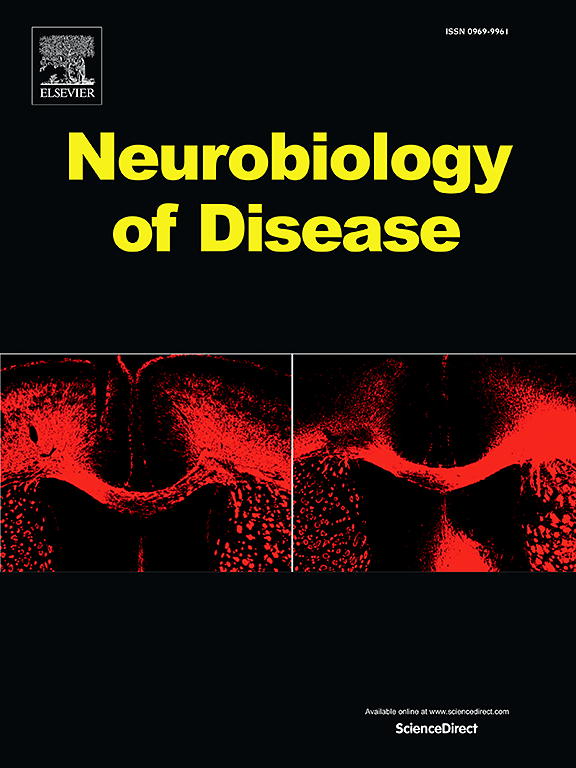雄性大鼠从反复社交失败诱发的抑郁中自发缓解后多巴胺 D2/D3 受体和血清素转运体的可用性增加;一项大鼠 PET 研究。
IF 5.1
2区 医学
Q1 NEUROSCIENCES
引用次数: 0
摘要
大多数抑郁症药物治疗都以单胺转运体为靶点,约有 50%的患者在接受治疗后症状会得到缓解。一旦症状得到缓解,就很难区分抗抑郁药引起的大脑单胺类递质的变化和与缓解本身相关的变化。在这项研究中,我们旨在研究自发缓解的重复社交失败(RSD)诱导的抑郁症大鼠大脑中多巴胺 D2/D3 受体和血清素转运体(SERT)的可用性。我们将行为测试和正电子发射断层扫描(PET)与[11C]拉氯必利和[11C]DASB结合起来,分别探讨了多巴胺D2/D3受体和5-羟色胺转运体(SERT)可用性的变化。接受 RSD 的雄性大鼠在 RSD 后 1 天表现出外周皮质酮水平升高、体重下降和失神(用蔗糖偏好试验测量),证实了类似抑郁症状。这些类似抑郁症的症状在 RSD 2 周后已不复存在。与未受刺激的对照组动物相比,抑郁症状恢复的大鼠尾状核丘脑中的D2/D3受体结合减少,脑干、岛叶皮层、中脑和丘脑中的SERT可用性增加。我们的研究表明,抑郁症状的缓解并不仅仅是单胺类传导的 "正常化",即使抑郁症状已经缓解,多巴胺能和血清素能神经传导的变化仍会在多个脑区持续存在。这些结果为研究 RSD 诱导的大鼠抑郁模型中与缓解相关的大脑变化提供了新的视角。本文章由计算机程序翻译,如有差异,请以英文原文为准。
Increased dopamine D2/D3 receptor and serotonin transporter availability in male rats after spontaneous remission from repeated social defeat-induced depression; a PET study in rats
Most pharmacological treatments for depression target monoamine transporters and about 50 % of treated patients attain symptomatic remission. Once remission is attained, it is hard to distinguish the changes on brain monoaminergic transmission induced by the antidepressants, from those associated to remission per se. In this study, we aimed at studying the brain of spontaneously remitted rats from repeated social defeat (RSD)-induced depression in terms of dopamine D2/D3 receptor and serotonin transporter (SERT) availability, showing absence of depressive symptoms 2 weeks after RSD. We combined behavioral tests and positron emission tomography (PET) with [11C]raclopride and [11C]DASB to explore the changes in dopamine D2/D3 receptor and serotonin transporter (SERT) availability, respectively. Male rats submitted to RSD showed increased peripheral corticosterone levels, decreased body weight and anhedonia, as measured with the sucrose preference test, 1 day after RSD, confirming depressive-like symptoms. These depressive-like symptoms were no longer present 2 weeks after RSD. Rats that recovered from depressive-like symptoms showed decreased D2/D3 receptor binding in the caudate putamen and increased SERT availability in the brainstem, insular cortex, midbrain and thalamus, compared to control non-stressed animals. Our study shows that remission of depressive-like symptoms does not just “normalize” monoaminergic transmission, as changes in dopaminergic and serotonergic neurotransmission linger in several brain regions even after depressive-like symptoms have already resolved. These results provide new insights into the brain changes associated to remission in the RSD-induced depression model in rats.
求助全文
通过发布文献求助,成功后即可免费获取论文全文。
去求助
来源期刊

Neurobiology of Disease
医学-神经科学
CiteScore
11.20
自引率
3.30%
发文量
270
审稿时长
76 days
期刊介绍:
Neurobiology of Disease is a major international journal at the interface between basic and clinical neuroscience. The journal provides a forum for the publication of top quality research papers on: molecular and cellular definitions of disease mechanisms, the neural systems and underpinning behavioral disorders, the genetics of inherited neurological and psychiatric diseases, nervous system aging, and findings relevant to the development of new therapies.
 求助内容:
求助内容: 应助结果提醒方式:
应助结果提醒方式:


